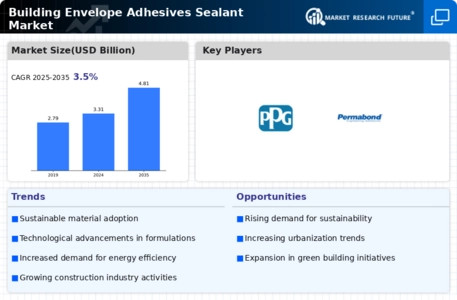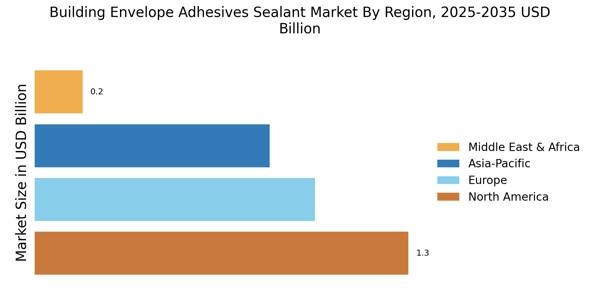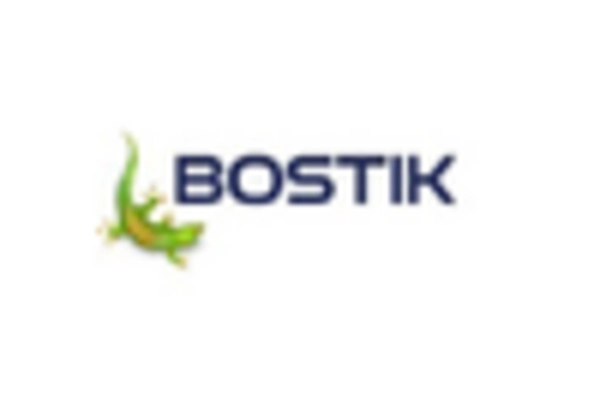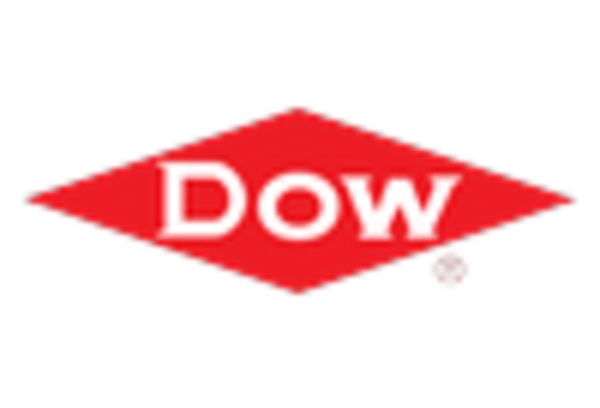Regulatory Compliance
Stringent building codes and regulations are influencing the Building Envelope Adhesives Sealant Market. Governments worldwide are implementing stricter guidelines to enhance energy efficiency and safety in construction. These regulations often mandate the use of specific types of adhesives and sealants that meet performance standards. As a result, manufacturers are compelled to innovate and adapt their product lines to comply with these evolving requirements. This compliance not only ensures market access but also enhances product credibility among consumers. The ongoing evolution of regulatory frameworks is likely to create opportunities for growth within the Building Envelope Adhesives Sealant Market, as companies that align with these standards may gain a competitive edge.
Technological Innovations
Technological advancements in adhesive and sealant formulations are reshaping the Building Envelope Adhesives Sealant Market. Innovations such as advanced polymer technologies and smart sealants that respond to environmental changes are becoming increasingly prevalent. These developments not only enhance performance but also extend the lifespan of building materials, thereby reducing maintenance costs. The integration of technology in product development is likely to attract a broader customer base, as builders seek high-performance solutions that offer durability and efficiency. As a result, the market is expected to witness a surge in demand for technologically advanced sealants, which could significantly influence the dynamics of the Building Envelope Adhesives Sealant Market.
Sustainability Initiatives
The increasing emphasis on sustainability within the construction sector appears to drive the Building Envelope Adhesives Sealant Market. As regulations tighten and consumers demand eco-friendly solutions, manufacturers are innovating to create adhesives and sealants that minimize environmental impact. This shift is evidenced by the growing adoption of low-VOC and water-based products, which are gaining traction among builders and architects. The market for sustainable building materials is projected to reach substantial figures, indicating a robust demand for environmentally responsible sealants. Consequently, companies that prioritize sustainability in their product offerings may find themselves at a competitive advantage, potentially capturing a larger share of the Building Envelope Adhesives Sealant Market.
Growth in Construction Activities
The resurgence of construction activities across various sectors is a pivotal driver for the Building Envelope Adhesives Sealant Market. With urbanization and infrastructure development on the rise, the demand for effective sealing solutions is expected to increase. According to recent data, the construction industry is projected to grow at a steady rate, leading to heightened requirements for adhesives and sealants that ensure structural integrity and energy efficiency. This growth is particularly evident in residential and commercial projects, where the need for reliable building envelope solutions is paramount. Consequently, the Building Envelope Adhesives Sealant Market stands to benefit significantly from this upward trend in construction activities.
Rising Demand for Energy Efficiency
The growing focus on energy efficiency in building design is a significant driver for the Building Envelope Adhesives Sealant Market. As energy costs rise and environmental concerns mount, builders and architects are increasingly seeking solutions that enhance thermal performance and reduce energy consumption. High-performance sealants that minimize air leakage and improve insulation are becoming essential components of energy-efficient buildings. This trend is supported by various initiatives aimed at promoting sustainable construction practices. The demand for energy-efficient building materials is expected to continue its upward trajectory, thereby positively impacting the Building Envelope Adhesives Sealant Market as stakeholders prioritize energy-saving solutions.


















Leave a Comment